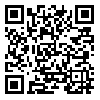BibTeX | RIS | EndNote | Medlars | ProCite | Reference Manager | RefWorks
Send citation to:
URL: http://jhs.mazums.ac.ir/article-1-1003-en.html

 , Chariefa Aaliyah C. Al Ali
, Chariefa Aaliyah C. Al Ali 
 , Kyramae M. Alava
, Kyramae M. Alava 
 , Trisha Andree J. Aquino
, Trisha Andree J. Aquino 
 , Yuri Benedict J. Autor
, Yuri Benedict J. Autor 
 , Ranieza Jazz R. Baltazar
, Ranieza Jazz R. Baltazar 
 , Jasmine Kyle C. Casicas
, Jasmine Kyle C. Casicas 
 , Ma. Melevir Madelyn A. Castañares
, Ma. Melevir Madelyn A. Castañares 
 , Cristine M. Dulfo
, Cristine M. Dulfo 
 , Raenah Patrizia B. Dy
, Raenah Patrizia B. Dy 
 , Paolo B. Araune *
, Paolo B. Araune * 
 , Rodesa Shaira B. Cornito
, Rodesa Shaira B. Cornito 

Background and Purpose: Menstrual health literacy (MHL) refers to an individual’s ability to access, understand and apply accurate information about menstruation, including biological processes, hygiene practices, and cultural perceptions. Despite its importance, menstruation has remained stigmatized, leading to misinformation and inadequate MHL among young female adults. This study describes young female adults’ MHL, beliefs and hygiene practices in Northern Mindanao. It also examined differences in MHL between urban and rural areas, considering factors such as education, healthcare access and cultural norms. By identifying gaps in knowledge and practices, the study provided insights into the factors influencing MHL in this population.
Materials and Methods: This descriptive study utilized a cross-sectional design to assess the associations between cultural influences, educational backgrounds, socioeconomic status, and menstrual beliefs among young female adults. Based on the Cochran formula for sample size determination, the study sample consisted of 477 participants, 212 selected from urban areas and 265 from rural areas in Northern Mindanao. Participants were selected using simple random sampling. Data were collected using a self-administered, structured questionnaire, which included 28 close-ended items adapted from the menstrual practices questionnaire and tailored to local cultural contexts. The questionnaire assessed participants’ MHL, beliefs, hygiene practices and the types of menstrual materials used. Inferential statistical methods, including analysis of variance (ANOVA), t-test and the Pearson correlation, were used to analyze relationships between MHL and demographic characteristics.
Results: The study found that educational attainment significantly influenced menstrual hygiene awareness (P<0.01). College graduates had the highest awareness (mean=3.57) of menstrual hygiene routines and practices, while those with no formal education showed the lowest awareness (mean=2.67). Geographic location impacted menstrual practices (P=0.026), with rural respondents exhibiting slightly higher awareness (mean=3.45) compared to urban respondents (mean 3.37). However, no significant difference was observed for menstrual hygiene routines (P=0.561). The type of menstrual material used also affected awareness (P<0.01). Tampon users had the highest awareness of menstrual hygiene routines (mean=3.71), while reusable sanitary pad users had the highest awareness of menstrual practices (mean=3.51). In contrast, cloth/towel users had the lowest awareness in both areas (mean=3.06 and 3.15, respectively). Pearson correlation analysis revealed no significant relationship between awareness of menstrual hygiene and menstrual beliefs, with P=0.410 for menstrual hygiene routines and 0.752 for menstrual practices, indicating that awareness did not strongly correlate with changes in beliefs.
Conclusion: The study highlights the need for educational interventions and improved access to modern menstrual materials to enhance menstrual hygiene awareness and practices. By focusing on education and promoting modern menstrual products, it is possible to improve menstrual health outcomes among young female adults.
| Rights and permissions | |
 |
This work is licensed under a Creative Commons Attribution-NonCommercial 4.0 International License. |






